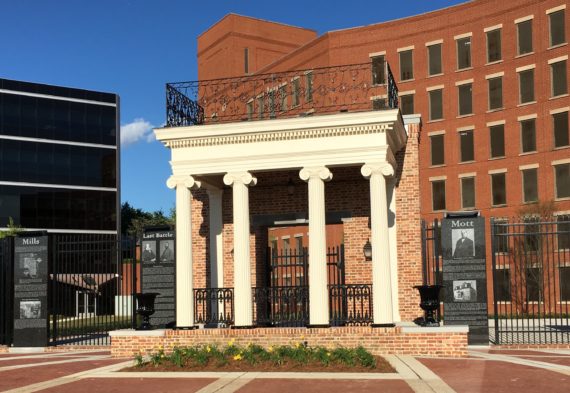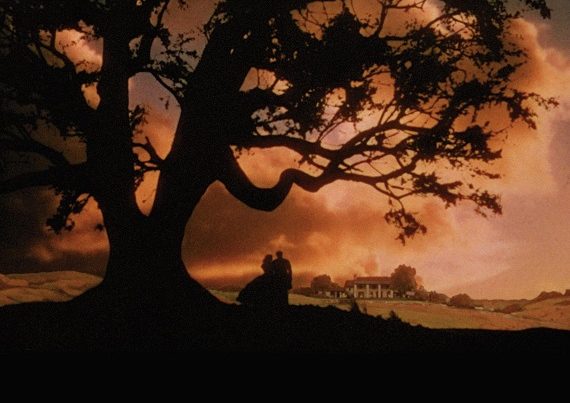A Review of Joseph W. Danielson, War’s Desolating Scourage: The Union’s Occupation of North Alabama, University Press of Kansas, 2012; Charles A. Misulia, Columbus Georgia 1865: The Last True Battle of the Civil War, The University of Alabama Press, 2010.
On Easter Sunday, April 16, 1865, Union forces under the command of General James Harrison Wilson attacked, captured, and sacked Columbus, GA in the last major battle of the War east of the Mississippi. Wilson’s campaign began in North Alabama and quickly moved South.
By this point in the War, Alabama could offer little resistance. Even the great Forrest could not stop Wilson at Selma. The “army” defending Columbus–like Forrest’s army at Selma–was little more than young boys and old men. Hastily constructed forts on the Alabama side of the Chattahoochee River were unmanned.
The Battle of Columbus began well enough for the Confederate defenders. They duped the Union cavalry into trying to cross a bridge packed with oil soaked cotton bales. As the Union charged the position, a Confederate battery overlooking the bridge opened fire and the bales were set ablaze. This temporarily halted the assault, but when the rest of the cavalry showed up later that day, Wilson decided on a night attack.
The Union army ultimately overwhelmed their disoriented and disorganized foes and the occupied the city. Much has been made of Sherman’s “March to the Sea” in 1865, but very few are aware of Wilson’s Alabama campaign and the “hard hand of war” in the Yellowhammer State or the Battle of Columbus.
Historians Joseph Danielson and Charles Misulia have brought this little known companion to Sherman’s swath of destruction to light.
Danielson begins his narrative in of the Union occupation of North Alabama in 1862. His picture of defiant Southern belles and recalcitrant civilians meshes nicely with Gary Gallagher’s portrayal of Southern nationalism and morale in his Confederate War. Daielson explains that while the Union army initially adopted a conciliatory policy in relation to Southern property and civil liberties, that soon gave way to tough measures after Southern civilians bristled at “Lincoln’s hordes.” Union soldiers began ransacking houses, stealing goods, and confiscating food. By 1864, one North Alabama woman remarked that Union soldiers had left her “poor children [with] nothing but a little piece of fried middling, and bread and water.” Fall harvests were seized while many Union soldiers walked away with clothes and shoes from helpless Southern women.
This story was repeated many times across the hills of North Alabama. Southern women who believed that a chivalric code would protect them from attack soon found out that Union soldiers did not subscribe to the same standards as their Southern men. “Lincoln’s hordes” took liberties with Southern women, burned their homes, and subjected them to physical violence. Their crime: supporting their men in the cause of independence. Their resolve was so strong that Union soldiers often marveled that it was the women, not the men, who were the most ardent patriots in North Alabama. If anyone were to read Drew Gilpin Faust’s nonsensical The Creation of Confederate Nationalism, they would believe that Southern women failed to support the cause and instead took to rioting across the South to find bread that had been confiscated by the Confederate government. Danielson has done much to dispel that myth.
Danielson concludes that “For a region where no major battle had occurred, the Confederate people, towns, and countryside suffered greatly.” Women chided their men for surrendering, took to bed out of grief, and refused to write in their journals for months after the war was over.
The hard hand of Union military occupation eventually transitioned to a punishing campaign across the State which culminated in the Battle of Columbus on Easter Sunday 1865.
Misulia provides a thorough blow by blow narrative of the event and its aftermath. Once the Confederate army failed in its defense of the city, the Union cavalry proceeded to loot and destroy anything of value, including almost every mill and factory in town. The only exception was the city’s grist mill. Wilson and his men occupied the finest homes in town, destroyed several bank vaults to steal now worthless Confederate money, tore apart storefronts in an effort to secure jewelry and clothing, and walked off with livestock and other valuables. The great conflagration of the city began when careless soldiers began detonating the thousands of pounds of munitions they captured in the raid. Some raiding also took place in the surrounding areas. Present day Phenix City was looted while many slaves looked on in horror as “ugly haired” men raided their plantations. One slave recalled, “they just rambled through the house a-cussin’ an’ a-carryin’ on, an’ breakin’ up all the dishes. The ole master, he run away.”
Alcohol fueled much of this thuggish behavior, and while Misulia argues that most of the soldiers behaved themselves, the simple fact that so much destruction was leveled on the city says more about Union command that the Union soldiers themselves. Wilson not only condoned their behavior, he encouraged it, as did General Ormsby M. Mitchel who oversaw Union occupation of North Alabama. The plundering began at the top.
These crimes are often brushed aside as a regrettable but necessary part of war. George W. Bush era crony Karl Rove praised the Union war effort in a review of Danielson’s book, calling the Confederate soldier the “enemy.”
Rove’s opinion is indicative of a larger problem, one that a careful reading of both Danielson’s and Misulia’s books can correct. Danielson is not pro-South, far from it, but he honestly portrayed Union actions in North Alabama. Misulia is not a professional historian which gives him an advantage over the academic crowd: he does not have to answer to the overlords of acceptable opinion in American history departments. Both books correct the notion that Southerners were traitors who deserved the beating they took, that the Union army was a virtuous band of moral crusaders, and that the majority of Southerners were duped by the plantation oligarchy into fighting and supporting a war they did not want. Certainly Rove did not gather this from the book, but his Republican colored glasses hid the real tragedy of the conflict.
Antebellum Southerners were Americans who had a different vision of American government and society, and the War set the South back both physically and economically for decades. Did any group of Americans deserve that? And if not, could there have been another way? Perhaps the “hard hand of war” imposed upon the South by “Lincoln’s hordes” was unnecessary. At the very least, Americans should consider it barbaric, but that would require a reassessment of the modern American historical narrative.







